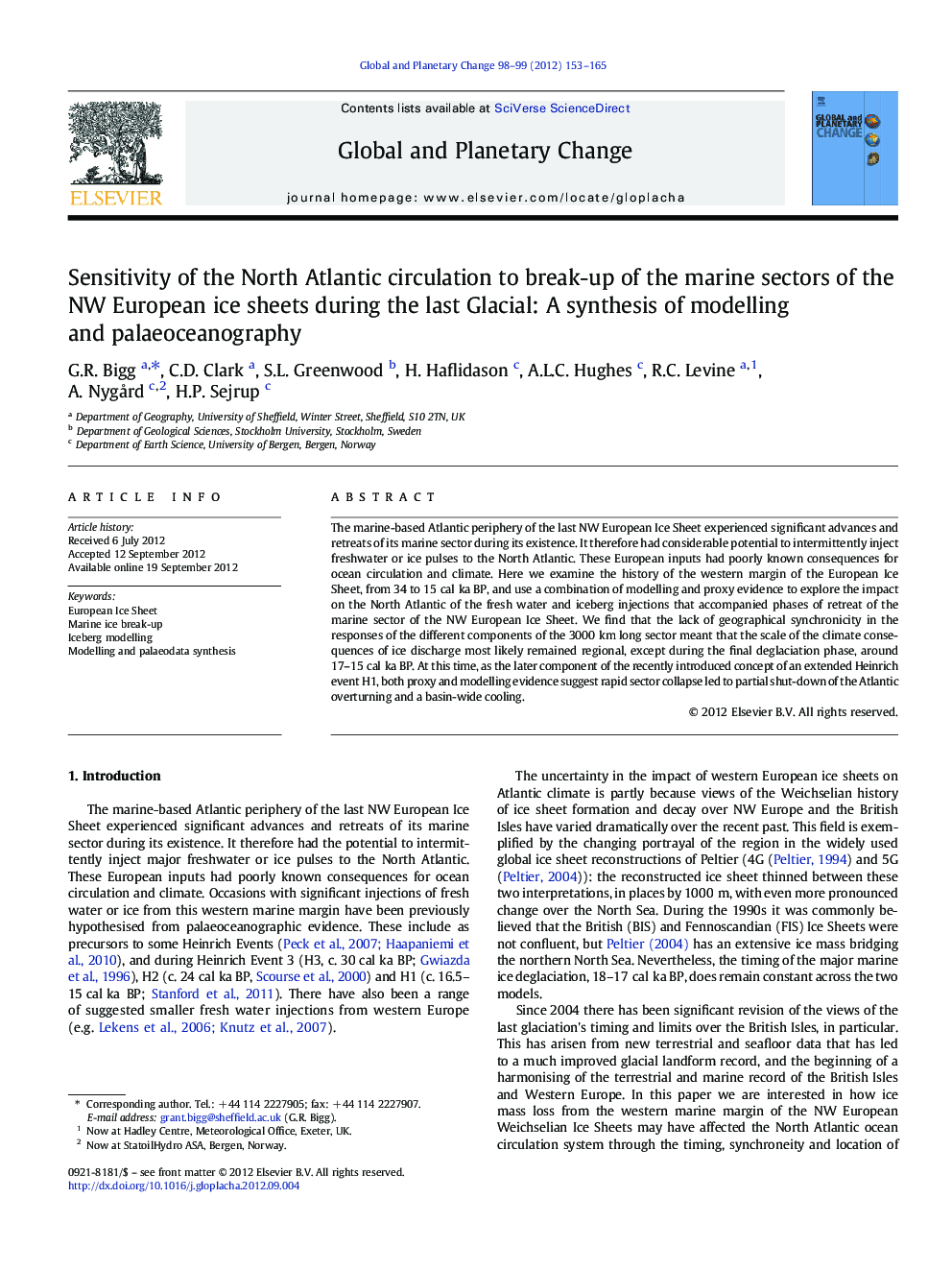| Article ID | Journal | Published Year | Pages | File Type |
|---|---|---|---|---|
| 4463682 | Global and Planetary Change | 2012 | 13 Pages |
The marine-based Atlantic periphery of the last NW European Ice Sheet experienced significant advances and retreats of its marine sector during its existence. It therefore had considerable potential to intermittently inject freshwater or ice pulses to the North Atlantic. These European inputs had poorly known consequences for ocean circulation and climate. Here we examine the history of the western margin of the European Ice Sheet, from 34 to 15 cal ka BP, and use a combination of modelling and proxy evidence to explore the impact on the North Atlantic of the fresh water and iceberg injections that accompanied phases of retreat of the marine sector of the NW European Ice Sheet. We find that the lack of geographical synchronicity in the responses of the different components of the 3000 km long sector meant that the scale of the climate consequences of ice discharge most likely remained regional, except during the final deglaciation phase, around 17–15 cal ka BP. At this time, as the later component of the recently introduced concept of an extended Heinrich event H1, both proxy and modelling evidence suggest rapid sector collapse led to partial shut-down of the Atlantic overturning and a basin-wide cooling.
► We examine the oceanic impact of the western margin of the last European ice sheet ► We cover the peak glaciation period of 34–15 cal ka BP ► We use a combination of ocean-iceberg modelling and palaeoceanographic data ► A lack of geographical synchronicity in ice sheet change often reduces impact ► During the final deglaciation, European meltwater has basin-wide impact
